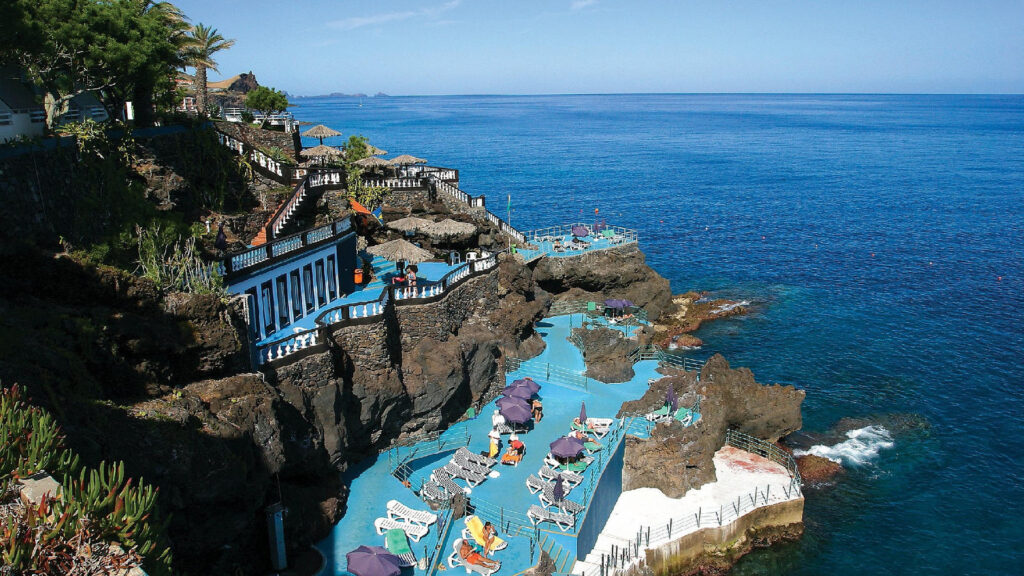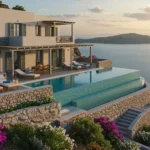Off the northwest coast of Africa lies an island that seems carved from dreams—Madeira Portugal. Known for its dramatic cliffs, emerald-green mountains, centuries-old traditions, and eternal spring-like weather, Madeira has quietly become one of Europe’s most captivating destinations. While it may not always feature on mainstream travel lists, those who visit often return with stories of breathtaking landscapes, kind-hearted locals, and a spirit of adventure that lingers long after they’ve left.
This article delves deep into what makes Madeira so special. From its volcanic origins and laurel forests to its wine-soaked traditions and adrenaline-pumping activities, there’s something for every kind of traveler here. Whether you’re a nature enthusiast, a cultural seeker, or someone just looking to escape the hustle of modern life, Madeira offers an experience that feels both grounded and magical.
The Geographical Charm of Madeira
Volcanic Origins and Diverse Landscapes
Madeira is an archipelago that includes the main island of Madeira, Porto Santo, and the uninhabited Desertas and Selvagens islands. Formed by volcanic eruptions millions of years ago, its rugged terrain tells a geological story etched into every cliff, crater, and coast.
What’s striking about Madeira Portugal is how rapidly the scenery changes. In one moment, you’re walking along sandy beaches; in the next, you’re scaling dramatic peaks or wandering through cloud-kissed forests. The island’s topography makes it an outdoor lover’s paradise—every hike, drive, or cable car ride reveals new vistas that seem untouched by time.
The Eternal Spring Climate
Thanks to its subtropical climate and the Gulf Stream’s influence, Madeira enjoys mild temperatures year-round. Summers are comfortably warm, and winters are surprisingly mild. Rainfall is more common in the north and central highlands, feeding the lush vegetation and cascading waterfalls that dot the region.
This climate makes Madeira an all-season destination. Whether you’re visiting in January or July, you’ll find blooming flowers, open trails, and buzzing local life.
Exploring Nature: The Outdoor Heartbeat of Madeira
Hiking the Levadas and Veredas
Perhaps the most iconic natural experience in Madeira is hiking the levadas—an ingenious network of irrigation channels originally built to carry water from the rainy north to the drier south. Today, they double as scenic hiking paths, guiding visitors through terraced hillsides, deep valleys, and forest canopies.
Some of the most popular levada trails include:
- Levada do Caldeirão Verde: A lush, mystical trail with tunnels and waterfalls.
- Levada das 25 Fontes: Famous for its natural springs and dense greenery.
- Pico Ruivo: The island’s highest point, offering panoramic views after a challenging ascent.
Laurisilva Forest – A UNESCO Treasure
The Laurisilva Forest is Madeira’s living relic from the Tertiary period and has been awarded UNESCO World Heritage status. Its prehistoric feel—complete with moss-draped trees and endemic birds—makes hiking here feel like stepping into another era.
Canyoning, Paragliding, and Whale Watching
Adventure seekers are spoiled for choice. Canyoning through volcanic gorges, paragliding over cliffs, and dolphin- and whale-watching excursions are common highlights. The waters around Madeira are home to over 20 species of cetaceans, making it a marine wonderland.
Culture and Tradition in Madeira Portugal
Funchal – The Beating Urban Heart
The capital city of Funchal is a colorful mix of old-world charm and contemporary flair. Cobblestone streets wind through whitewashed buildings with terracotta roofs. Local markets, like Mercado dos Lavradores, burst with exotic fruits, flowers, and freshly caught fish.
Don’t miss:
- Monte Palace Tropical Garden: A botanical paradise with koi ponds and sculptures.
- Teleférico do Funchal: The cable car that lifts you from sea level to hilltop neighborhoods.
- Zona Velha: The Old Town, known for its street art and intimate restaurants.
Festivals and Folklore
Madeira has a rich tradition of festivals, each offering a glimpse into the island’s soul:
- Carnival of Madeira: A spectacle of music, dance, and elaborate costumes.
- Flower Festival (Festa da Flor): Held every spring, celebrating Madeira’s floral abundance.
- Wine Festival: A tribute to the island’s wine heritage, including tastings and folk dances.
Locals often gather for traditional music performances, where the braguinha (a small string instrument) and passionate folk dances capture the region’s joy and resilience.
Madeira’s Culinary Experience
Traditional Dishes
Madeira’s cuisine is shaped by its geography and history. Here are a few dishes that define the local flavor:
- Espetada: Beef skewered on bay laurel sticks, grilled over open flames.
- Bolo do Caco: A circular flatbread served with garlic butter, perfect as a side or sandwich.
- Lapas: Grilled limpets, often seasoned with garlic and lemon.
Madeira Wine – A Taste of Legacy
No mention of Madeira Portugal is complete without highlighting Madeira wine. This fortified wine, known for its unique aging process involving heat and oxidation, has been produced on the island since the 15th century. Its varieties—dry, medium dry, medium sweet, and sweet—are enjoyed across the globe.
Interestingly, Madeira wine was used to toast the signing of the U.S. Declaration of Independence, proving its historical importance far beyond the island.
Staying in Madeira: Where Hospitality Meets Heritage
From luxury cliffside resorts to cozy quintas (traditional manor houses turned hotels), Madeira caters to all preferences. Many accommodations are family-run, reflecting the island’s warm, personal approach to hospitality.
Popular areas to stay include:
- Funchal: Ideal for first-timers and those who enjoy vibrant city life.
- Santana: Known for its thatched-roof cottages and rural charm.
- Ponta do Sol: A coastal town with serene beaches and great sunsets.
For a more immersive experience, some visitors opt to stay in mountain lodges, particularly when hiking is the focus of their trip.
Sustainability and Ecotourism Efforts
Madeira has made significant strides in promoting sustainable tourism. From preserving native species and ecosystems to regulating tourism in sensitive zones like Laurisilva, the island balances growth with conservation.
Several tour companies now offer eco-friendly packages, focusing on minimal environmental impact and deeper cultural engagement. These include organic farm visits, nature photography walks, and community-led experiences.
Hidden Gems You Shouldn’t Miss
Beyond the well-known spots, Madeira Portugal hides numerous off-the-beaten-path wonders:
- Ponta de São Lourenço: A dramatic peninsula with jagged cliffs and lunar-like landscapes.
- Fajã dos Padres: An isolated beach only accessible by cable car or boat.
- Curral das Freiras: A valley town tucked between mountains, known for chestnut dishes and local liqueurs.
Each of these places rewards curiosity and patience, revealing new layers of the island’s beauty and complexity.
Why Madeira Portugal Feels Different
There’s something undeniably unique about Madeira. It’s not just the scenery, although that’s breathtaking. It’s not just the food, the wine, or even the adventures. It’s the feeling of timelessness—of being in a place where the earth is still wild, the traditions are still alive, and the people still look you in the eye and smile.
Unlike many over-touristed destinations, Madeira feels intimate. It hasn’t lost itself in the crowd. It offers not just sights, but experiences that transform—quiet walks through foggy forests, conversations with fishermen, sunrises that silence everything else.
Conclusion:
Madeira Portugal is not a place you simply visit. It’s a place you feel. A floating garden in the Atlantic, shaped by fire and softened by centuries of tradition, it leaves a lasting imprint on the soul. Whether you’re here for the hiking, the food, the culture, or just the peace, Madeira welcomes you as you are—and offers far more than you expect.
So if you’re planning your next getaway and longing for something real, something beautiful, and something deeply human—let Madeira be your next stop. You may come for the views, but you’ll return for the feeling.
FAQs
1. Is Madeira Portugal part of mainland Portugal?
No, Madeira is an autonomous region of Portugal located in the Atlantic Ocean, southwest of mainland Portugal.
2. What is the best time to visit Madeira?
Madeira enjoys a mild climate year-round, but the best months are April to October for outdoor activities and festivals.
3. Do I need a visa to travel to Madeira Portugal?
If you’re a citizen of the EU or a Schengen country, you don’t need a visa. Other countries may require a Schengen visa.
4. Is Madeira suitable for family vacations?
Yes, with its safe environment, beautiful nature, and family-friendly accommodations, Madeira is great for all ages.
5. Can I explore Madeira without a car?
Public transport is available, but renting a car offers greater flexibility, especially for visiting remote spots and hiking trails.



